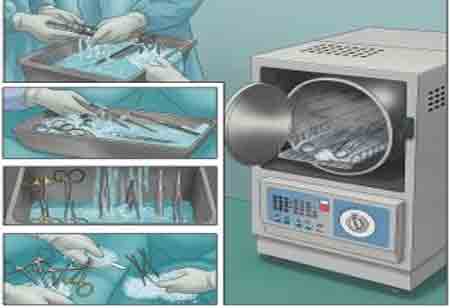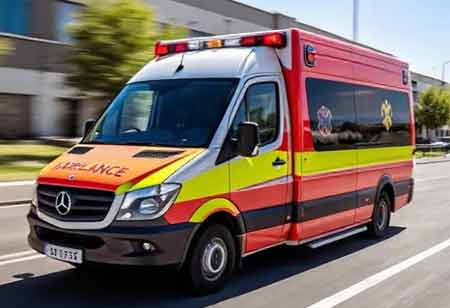Thank you for Subscribing to Healthcare Business Review Weekly Brief
Be first to read the latest tech news, Industry Leader's Insights, and CIO interviews of medium and large enterprises exclusively from Healthcare Business Review
Best Practices for Segregating Medical Waste
Technological advancements in clinical waste disposal, like AI, automation, and eco-friendly methods, improve safety, efficiency, sustainability, and regulatory compliance in healthcare waste management.

By
Healthcare Business Review | Thursday, January 16, 2025
Stay ahead of the industry with exclusive feature stories on the top companies, expert insights and the latest news delivered straight to your inbox. Subscribe today.
Technological advancements in clinical waste disposal, like AI, automation, and eco-friendly methods, improve safety, efficiency, sustainability, and regulatory compliance in healthcare waste management.
FREMONT, CA: The effective management of medical waste is crucial for safeguarding public health and protecting the environment. In Europe, stringent regulations govern the segregation and handling of medical waste, underscoring the importance of consistent and safe practices within healthcare settings.
Effective Management of Medical Waste in Healthcare
Understanding Medical Waste Categories
Medical waste is systematically categorised to ensure proper handling and disposal, reducing health and environmental risks. The key categories include infectious waste, hazardous chemical waste, radioactive waste, sharps waste, and general non-hazardous waste. Infectious waste includes materials contaminated with blood, bodily fluids, or pathogens, such as used personal protective equipment (PPE) and surgical dressings. Hazardous chemical waste comprises disinfectants, solvents, and laboratory reagents that pose chemical risks. Radioactive waste arises from radiotherapy or nuclear medicine procedures, including contaminated equipment and radiographic materials. Sharp waste includes items like needles, scalpels, and other sharp objects capable of causing injury or spreading infection. General non-hazardous waste consists of non-contaminated items, such as office paper, packaging, and general refuse. Each category requires tailored handling, storage, and disposal protocols to effectively mitigate risks.
Medical Waste Segregation Practices in Europe
Europe has established standardized waste segregation practices to enhance safety and regulatory compliance. Color-coded bins are widely used to streamline the process, with yellow bins designated for infectious waste, red bins for sharps, blue bins for non-hazardous recycling, and black bins for general waste. Containers used for medical waste must be clearly labeled with international biohazard symbols and appropriate categorization to prevent mishandling. Segregation at the source is a critical practice, ensuring that healthcare staff deposit waste into appropriate bins immediately to avoid cross-contamination. Additionally, durable, puncture-resistant, and leak-proof containers are mandatory for hazardous items like sharps and highly infectious materials. Compliance with EU standards, such as the UN3291 classification for healthcare waste, is rigorously enforced.
Training and Education
Training and education play a pivotal role in ensuring proper medical waste management in Europe. Healthcare facilities provide mandatory training programs for their staff, covering waste categorization, the importance of segregation in infection control, and appropriate responses to accidental spills or exposure. Periodic awareness campaigns, including workshops, posters, and informational videos, help reinforce best practices and foster compliance with waste management protocols.
Regulatory Compliance
The European Union enforces stringent regulations to govern medical waste management. Directive 2008/98/EC establishes overarching waste management principles, while the Waste Framework Directive aims to protect human health and the environment by mandating minimum standards. The ADR Regulations ensure the safe transport of hazardous waste under the European Agreement concerning the International Carriage of Dangerous Goods by Road. Regular audits of segregation practices are conducted to ensure facilities comply with these regulations and maintain the highest safety standards.
Sustainable Waste Management Solutions
Sustainability is a critical focus in Europe’s healthcare waste management strategy. Efforts to minimize waste generation include adopting reusable medical tools where feasible. Recycling programs are implemented for non-contaminated materials, such as packaging, plastics, and metals. Europe also promotes advanced disposal technologies, such as autoclaving for infectious materials, chemical treatment for hazardous waste, and incineration with energy recovery for non-recyclable waste. These initiatives demonstrate a comprehensive and environmentally responsible approach to managing medical waste while safeguarding public health and ecological integrity.
Effectively segregating medical waste is not only a regulatory requirement but also a critical measure for safeguarding public health and promoting environmental sustainability. By adhering to established best practices and fostering a culture of compliance and ongoing education, European healthcare facilities set a benchmark for responsible and sustainable medical waste management. The adoption of innovative waste treatment solutions will further strengthen these efforts in the long term.






